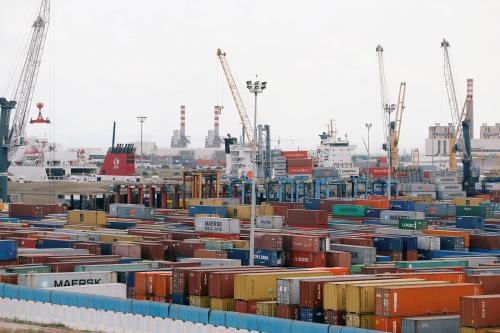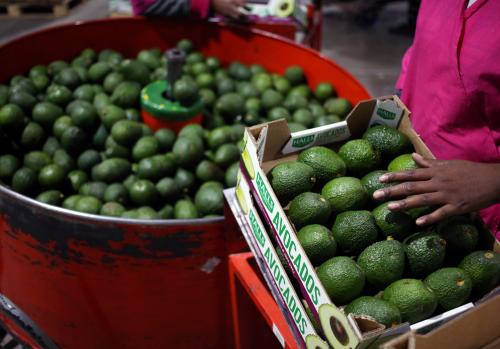On January 11, the Africa Growth Initiative at Brookings released its annual Foresight Africa publication. This year’s report focuses on six key priorities for the region in 2019. The sixth chapter, Boosting trade and investment: A new agenda for regional and international engagement, discusses the upcoming implementation of the African Continental Free Trade Area Agreement (AfCFTA) and potential gains in regional and international trade.
Currently, as Figure 6.7 shows, intra-regional trade accounts for 17 percent of Africa’s exports compared to 59 percent in Asia and 69 percent in Europe. Manufactured goods also play a more limited role in Africa’s exports compared to other regions, highlighting the continent’s limited integration into global value chains. African countries traded more manufactured goods among themselves, making up 42 percent of intra-regional trade, compared to 15 percent of extra-regional exports.
Implementation of the AfCFTA is expected to boost Africa’s regional and international trade. In her essay, Vera Songwe, executive secretary of the United Nations Economic Commission for Africa, highlights the potential for intra-regional trade to increase by between $50 billion and $70 billion by 2040 solely due to the removal of tariffs. Further, if well implemented, intra-regional trade could constitute up to 50 percent of exports by 2040, up from the current 17 percent. However, Songwe argues that making trade more equitable and improving export diversification and product quality will also be important markers for the success of the AfCFTA.
As Figure 6.1 below shows, most African countries were unable to diversify their exports between 1990 and 2014. Only three African countries—Rwanda, Senegal, and Sudan—improved their scores. Further, diversified exporters such as Morocco and South Africa saw their scores deteriorate. The AfCFTA is expected to help increase diversification, allowing access to regional markets and for a greater range of goods produced. This is particularly important for commodity-exporting economies, helping insulate them from commodity price swings. Trade diversification should also allow more small and medium enterprises to participate in international trade, spurring innovation and enhancing productivity.








Commentary
Figures of the week: Increasing intra-regional trade in Africa
February 22, 2019